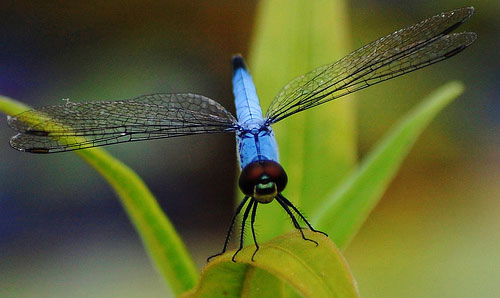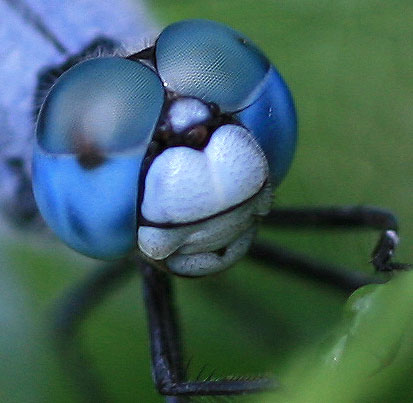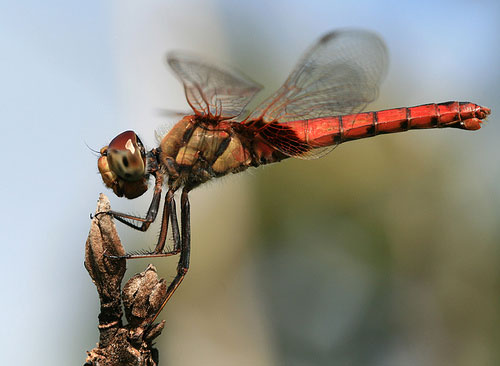What is the difference between macro, micro and closeup photography?
There is often much confusion amongst new photographers over the terms macro, micro and close up photography and how they differ. For starters, macro and micro usually refers to the same thing, in that Nikon names their range of 'macro lenses' with the word 'micro'. Canon on the other hand, calls them macro lenses.
For example, Nikons top macro lens is called AF-S VR Micro-Nikkor 105mm f/2.8G IF-ED lens. Notice the term micro in that name.
Now for comparisons sake, Canon's top macro lens is called a Canon EF 100mm f/2.8 macro lens. This time, instead of seeing the term micro, you'll notice the term macro within the lens name.
What does macro and micro refer to when it comes to photography?
The word macro means big, whereas the word micro mean small. So how is it that these two terms related?
If the subject you are photographing is small and you want to make it look big, you end up with a "macro" view of a "micro" subject.
What is macro (micro) photography?
Macro photography is that which is taken with a dedicated macro lens. A real macro lens has the capability of achieving in the least a 1:1 magnification. Just because a camera has the word macro written on it, doesn't make it a true macro lens. Both the Nikon and Canon lenses mentioned above, are considered real macro lenses. If you're not sure how to recognise a real macro lens, you may find an earlier article useful called, What is a real macro lens.
What is close up photography?
Close up photography, is the act of photographing objects such as flowers or insects in close range so the subject you are photographing fills the frame. In other words, it's the act of photographing subjects close up. This is easily achievable with any lens, even a 300mm telephoto lens.
Macro photography is in essence close up photography as well. However, close up photography is not always considered as true macro photography. For example, if you have a lens that is NOT considered a real macro lens, yet offers a macro setting (as many do nowadays), this is usually refered to as being close up photography, and not true macro.
How to recognise the difference between macro and close up photography?
Capturing the finest detail, is one of the main differences between macro / micro photography and close up photography.
Macro lenses are expensive for a reason. That being, a true macro lens allows the photographer to capture finer detail than would otherwise have been seen. For example, the hairs on an insects face, or the pattern in its eye.
Take the two photographs below for example. The first image is a very good example of a close up photograph, taken with a Nikon telephoto lens. While the second photograph is a macro shot, allowing for bigger magnification and showing the finest detail.

Link (click here)
Is your camera a macro lens if it has macro written on it?
Just because your camera lens has macro written on it, doesn't mean it is actually macro. Unfortunately manufacturers sometimes add this word to their lenses as a marketing ploy. Yes, it is true they can focus closer than an ordinary lens. However, don't expect them to get as close as a true macro.
Blue Dragonfly
|
How to recognise a real macro lens
A real macro lens has the capability of achieving in the least a 1:1 magnification. This should be written either on the lens or in the manual under specifications. Note: the aperture f stop is not the ratio we are talking about here. For example, the macro lens used to photograph the dragonfly above has an aperture of f2.8. However it also has a 1:1 magnification rating, making it a true macro lens.
Technically, this ratio is a measure of how large the subject appears on your camera's sensor. A lens with a magnification of 1:1 means the subject appears as life size on the sensor. A macro lens with a 2:1 ratio captures subjects twice as large as they appear in real life. On the other hand for a 1:2 lens, the subject appears on the sensor as half its actual size. Therefore a 1:2 lens is not considered a real macro lens.
- 1:1 or 2:1 ratio is a real macro lens
- 1:2 is not a real macro lens
Orange Dragonfly
|



No comments:
Post a Comment